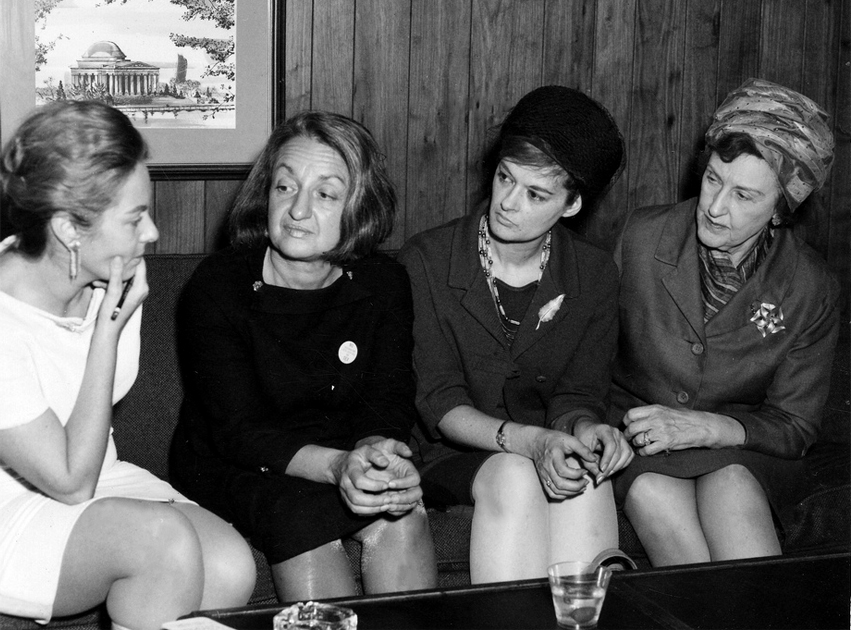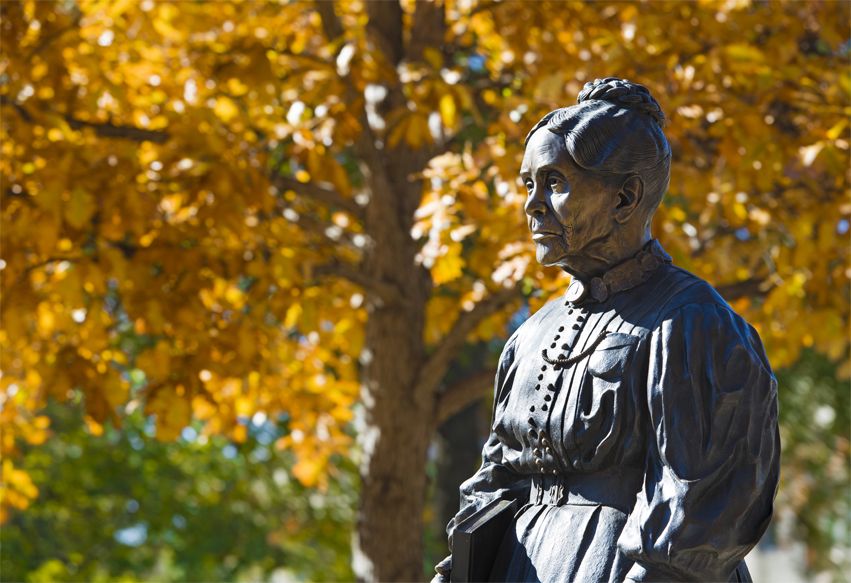The National Women’s Hall of Fame (NWHF) was established in 1969. It is located in Seneca Falls, New York, a relatively small community at the northern end of Lake Cayuga, in the Finger Lakes region of western New York State. My wife Beth and I visited the Hall of Fame in October during a recent trip to New England. Our interest in visiting is based on the fact that three women from Peoria have been inducted into the NWHF. Through 2021, the NWHF had a total of 293 inductees, averaging about six inductees per state. To have three inductees from Peoria alone is a significant recognition of the character and accomplishments of the women who have called Peoria their home. But first, let me digress with a bit of background.
A Growing Movement
Before our visit, I found it quite odd that the NWHF was located in this small community (of only 9,000 residents) in western New York State. The largest community in the region is Ithaca, located at the southern end of Lake Cayuga, with a population of 30,000. As I discovered, however, Seneca Falls has a notable significance within the women’s rights movement.
The very first women’s rights convention was held in Seneca Falls on July 19 and 20, 1848, only a few years before the start of the American Civil War. The meeting was organized by Elizabeth Cady Stanton, a resident of Seneca Falls, along with female Quakers who lived in the region. In 1840, Stanton had traveled with her husband and a dozen other American abolitionists to London for the first World Anti-Slavery Convention. Although women could listen from the gallery, they were not allowed to speak or vote at the convention.
That experience provided the motivation for Stanton to become more politically involved. In the fall of 1841, she gave her first public speech, on the subject of the Temperance movement, in front of 100 women in Seneca Falls. She was assisted in organizing the 1848 convention by Lucretia Mott, a Philadelphia-based Quaker who was famous for her oratorical ability. Frederick Douglass also attended the convention, speaking eloquently on the subject of a woman’s right to vote. Approximately 300 people attended the convention, approving a “Declaration of Sentiments” which became “the single most important factor in spreading news of the women’s rights movement around the country,” according to historian Judith Wellman.
In August 2020, the NWHF moved to a new home in Seneca Falls—the former Seneca Knitting Mill factory, along the banks of a branch of the Erie Canal. Its exhibits reflect this very recent change and currently occupy only half of the main level of the building. Plans are in place to expand the exhibits throughout the entire first floor, as well as onto the second and third floors. And now, on to the Peoria women who have been inducted into the NWHF.

Betty Friedan
The first Peorian to be honored by the NWHF was inducted in 1993. Her name was Bettye Naomi Goldstein, born in Peoria in 1921 to Harry and Miriam (Horwitz) Goldstein, whose families were from Russia and Hungary. Her father owned a jewelry store in Peoria, while her mother wrote for the society page of a newspaper.
Friedan attended Peoria High School and became involved with the school newspaper. In 1938 she headed to Smith College, graduating summa cum laude in 1942 with a major in psychology. Twenty years later, in 1963, she authored one of the most famous and influential books of the 20th century, The Feminine Mystique, which is credited with sparking a new wave of American feminism and triggering a period of change that continues today. In 1966, she co-founded and was elected the first president of the National Organization for Women (NOW). She remained active in politics and advocacy until she passed away at the age of 85 in Washington, DC.

Lydia Moss Bradley
The second Peorian was inducted into the NWHF in 1998. Born in Indiana in 1816, Lydia Moss Bradley became known nationally as the founder of an institution of higher learning that would eventually become Bradley University. Her early life as a wife and mother was one of heartache, as all six of her children succumbed to various illnesses. At the age of 31, she and her husband moved to Peoria, where they prospered in the areas of real estate and banking over the next three decades.
In 1875, Bradley joined the First National Bank of Peoria’s board of directors, becoming the first female member of a national bank board in the United States. Her fondest project, however, was the 1896 establishment of Bradley Polytechnic Institute to honor her late husband, Tobias, and their six children. She initially provided 17.5 acres of land and funds for two campus buildings and annual operating expenses. Originally organized as a four-year academy, it became a four-year college in 1920 and a full university offering graduate programs in 1946, when it was renamed Bradley University. On January 16, 1908, Lydia Moss Bradley succumbed to illness at the age of 92. She was laid to rest alongside her husband and children in Springdale Cemetery in Peoria. Her entire estate was left to the school she had founded.
Nancy Brinker
The third Peoria woman inducted into the NWHF is a familiar face to people throughout central Illinois. Most everyone who has participated in a Susan G. Komen Race for the Cure event knows how the founder of the movement, Nancy Brinker, through a promise to her dying sister, founded the Susan G. Komen Breast Cancer Foundation in 1982. Under her leadership, Race for the Cure evolved into the world’s largest and most successful education and fundraising event benefiting breast cancer research, with annual events in more than 150 cities around the world.
Brinker was born in Peoria in 1946, the daughter of Marvin and Eleanor Goodman. In 1968, she received a B.A. from the University of Illinois at Urbana-Champaign. In 2001, she was appointed ambassador to Hungary by President George W. Bush. For her work on breast cancer research, Time Magazine named Brinker to its 2008 list of the 100 most influential people in the world. President Barack Obama honored her with the Presidential Medal of Freedom, the nation’s highest civilian honor, in 2009. Since May 2009, Brinker has served as the World Health Organization’s Goodwill Ambassador for Cancer Control. She was recognized by the Hall of Fame for her achievements in philanthropy and inducted in 2015.
These three women serve as a tribute to the tens of thousands of Peoria women who have achieved great accomplishments in their lives. Their stories of commitment and selfless dedication to the greater good of their community should serve as an inspiration to all of us today. PM
Mark Johnson and his wife Beth have both served as trustees of the Peoria Historical Society. Over the past decade, Beth has organized the Society’s guided historical tours throughout the city. In 2019, she and Marilyn Leyland developed a tour specifically focused on “Notable Women of Peoria.”
- Log in to post comments

